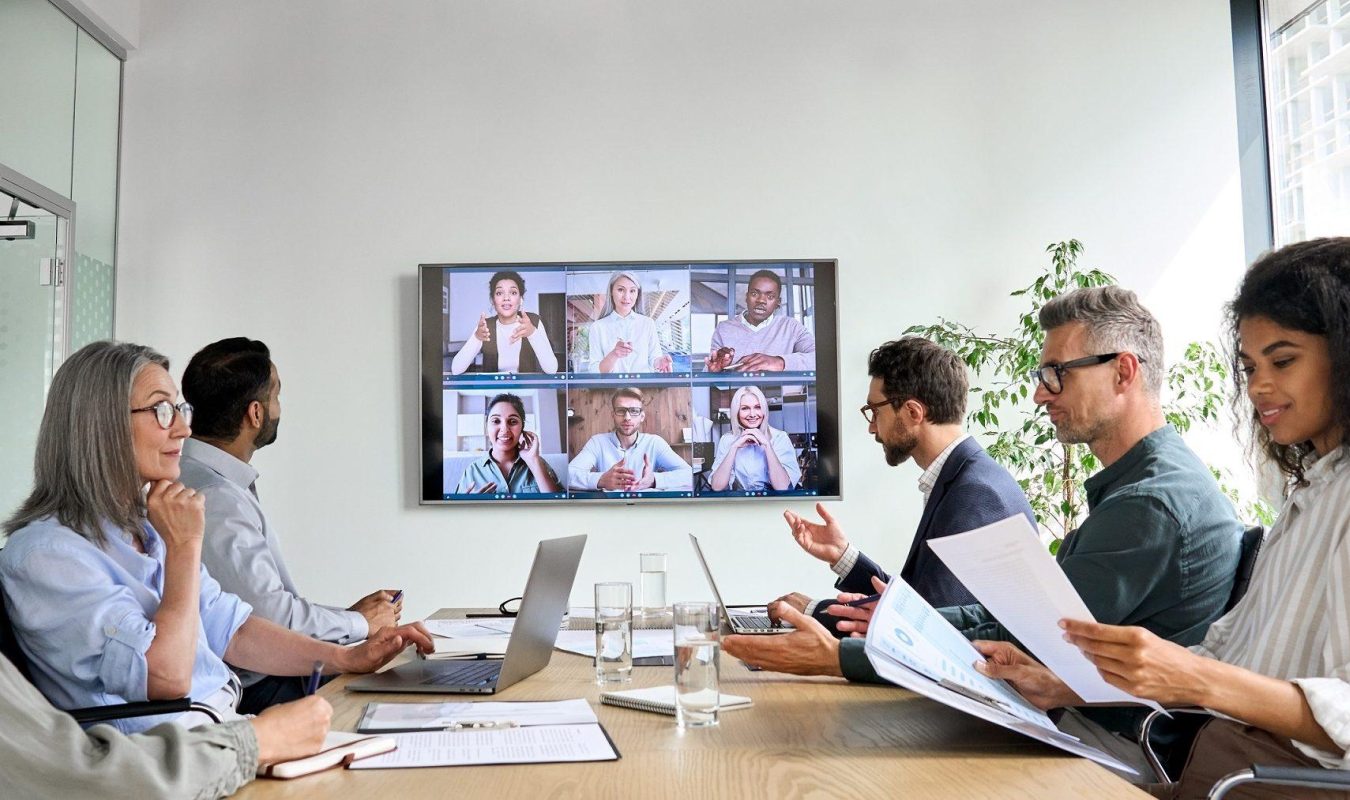Hybrid Working
6 Observations and 6 Hypotheses on the Way to the New Ways of Working

„6 Hypotheses“
Virtual working becomes hybrid working
Virtual working developed rapidly in the Covid pandemic, driven by the tough targets set as part of the pandemic measures. In the language of organizational developers, the "Sense of Urgency" was so clear that the learning curve was very steep and even less tech-savvy people quickly learned to work with virtual means. Now we are in the process of deriving the benefits from both ways of working and developing "hybrid working" in which we can use the advantages from both concepts.
There will be no return to the old normality
Although a return to the usual work dominated by face-to-face work would now (soon) be possible again, this will not happen in most organizations. The benefits are too great, the advantages of hybrid working too weighty: greater flexibility for companies and employees and savings on travel and office space. Hybrid working seems state of the art to us. In retrospect, it seems almost curious that it took the pandemic to discover all these possibilities.
The development of the new normal is proceeding at a rapid pace
A gigantic field trial is currently underway in which countless companies and organizations are simultaneously developing what is known as hybrid working. Regulations, good practices, recommendations and frameworks are emerging simultaneously in many places. They all aim to exploit the advantages, mitigate the disadvantages and enable the transformation to the "new normal" with little friction. In the process, everyone is still learning simultaneously in short iterations. Solutions and real learnings become visible step by step. Great advances in knowledge are rare.
The lived corporate and leadership culture develops more slowly
Parallel to the explicit or written-down rules and framework conditions, a new culture of working, cooperation and corporate culture is developing. Culture as the interaction of all implicitly effective, i.e. not explicitly described, rules, norms, beliefs and internal guidelines and by its very nature develops more slowly than regulations written on paper. Culture needs time to adjust.
A key role in the transformation is played by leadership
The task of leaders at all levels is the classic task in change/transformation: ensuring the success of the organization, providing orientation for employees, empathetically supporting employees in change, and ensuring their own effectiveness. As is often the case, this is done in the face of great uncertainty, changing goals and a high degree of personal involvement.
Leaders and teams need to find new solutions to key organizational issues
Central questions of corporate culture are currently experiencing a tough confrontation due to the new circumstances. Decisions have to be made on the course to be taken, regulations on flexible working have to be drawn up. But the complex decision-making situation also requires a sense of proportion and a great deal of attention to the results.
It is about high intangible values of organizations and teams: How do we preserve identification and loyalty, how do we ensure solidarity among employees. How do we measure and reward performance, how do we ensure quality. And how do we guarantee a safe space for learning, innovation and conflict resolution?
„6 Observations“
The diversity and individuality of living and working situations are increasing
In the old world, relative equality of working conditions was achieved through the organization of work in common places (offices and buildings) at common times (regulated working hours). Differences existed, but they were determined by hierarchies and organizational units. In the hybrid space, other, private and personal circumstances now have a much stronger impact on work than before. Living conditions, private and family situations, and even private tensions and conflicts have an impact. And they have to be adequately taken into account and addressed by the leaders.
Leading has become even more complex
Until recently, it was still possible for managers to largely stay out of the private lives of their employees. For many of those involved, this was normal; it was considered desirable and professional. With the blending of life spheres in the context of hybrid leadership, leaders must take an interest in the working conditions of their employees. And how exactly this is done, where the line should be drawn between the employer's duty of care and inadmissible interference in private life, requires a new consensus. And a great deal of bilateral and multilateral understanding.
How do loyalty and identification develop in the new world of work?
The bond with an employer, an organization, a team or a manager used to play an important role, among other things, in the time spent together, the shared place of work, the business trips taken and the evenings in the beer garden. Shared experiences, especially the unplanned, and hardly questioned rites of work welded people together. The chance meeting in the coffee kitchen, the meal together in the cafeteria, the meeting while waiting for the suburban train.
In the hybrid world of work, such experiences no longer automatically arise in the same way. In order to enable bonding and identification, it seems worthwhile to continue meeting and taking free "quality time" in the future. Even if it doesn't seem efficient at first.
Psychological Safety
As social beings, we humans have always used all our senses to assess situations, dangers and other people. Trust in people and in groups arises when I perceive congruent, coherent messages in my counterpart and can thus feel safe. In many situations, hybrid working reduces us to visual and auditory perception. Other sensory channels and the much-vaunted nonverbal communication are largely absent. We can rise above these losses professionally or admit that we are missing elements of communication, relationship building and assessment. They are missing for building trust and bonding.
Perception and bias
Brain research has shown that people tend to simplify and generalize information. This saves thinking time and makes us capable of making quick decisions in critical situations. And so we often pigeonhole people and don't see them in as many facets as they might deserve.
In hybrid work, this happens even more easily because we meet less informally, have fewer sensory channels at our disposal, and lack the chance encounters with which we perceive the diversity of the other person's personality. For this, too, it seems important that we still enable a remnant of face-to-face work: to be able to give appreciative feedback, to measure performance, and to ensure quality. To resolve conflicts and make development possible.
Summary
Many organizations are looking for the best way to move into hybrid working. In the process, challenging decisions are on the horizon today, while we actually need to get our bearings as well. Thus, in the "hybrid working" field test, we are simultaneously culture shapers and culture observers.
What will be important beyond the more practical tips on digital and organizational frameworks is to proceed step by step, remain mindful and find pragmatic solutions. It takes courage to jointly develop and reflect on the individual path to hybrid working. We are all excited about the next iterations, the next wave of insights and understanding. And we look forward to sharing them with you.


